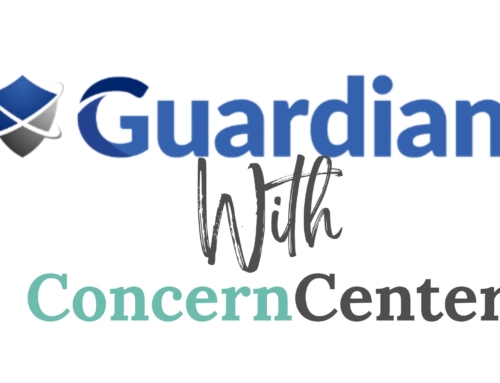The date was April 16, 2007.
I think it was a Monday.
I know it was a day that changed the landscape of student support on college campuses, forever.
On this day an undergraduate student opened fire, shot, and killed 32 people and wounded 17 others on the campus of Virginia Tech. The nation was stunned. If this could happen on a college campus—where smart and capable students were focusing on bettering themselves and their futures—it could happen anywhere.
In the years that followed, colleges and universities across the United States would engage in many conversations, debates, and philosophical discussions about this event most often exchanging views about:
- How to identify students of concern, or even
- If that should be the responsibility of institutes of higher education, as well as
- Whether there should there be a different way to identify students of concern from those students who may be a threat, and
- What the ramifications could be for saying, “But that would never happen here.”
Colleges and Universities would benchmark with other institutions to see what they were doing to “ensure” this never happened on their campus. Legal counsel would weigh in. Students would demand action. And school shootings would continue to happen throughout the country in almost every year that followed, most often with death tolls between 1-6 individuals, until the year 2012 when death tolls increased again, this time at an elementary school in Newtown, Connecticut.
Post Virginia Tech, programs (now commonly referred to as Behavioral Intervention Teams or Care Teams) started popping up all over the country. You can read more about these teams here and even more specifically to K-12 here. I know quite a bit about this because I was tasked with creating such a program at a private university in upstate New York in 2011 and have dedicated much of my career to this work since.
It is because of my experiences with this work that I can currently say, “Some K-12 districts are ready to identify students of concern, while others are not… yet”. To be fair, this is the same cycle we saw in higher education after the Virginia Tech massacre. Some colleges and universities were further along on the student support continuum than others; others (although not many), even 12 years later, are still in the first stage: Denial.
Below I have drafted a common continuum I have experienced in higher education when it comes to discussing whether programs used to identify and support students of concern should be pursued. After speaking with quite a few superintendents, principals, and parents, I believe this continuum to be relevant to K-12 as well.

Denial:
- Questions about how or if identifying students of concern is really necessary for your district. Feeling immune, nothing of this magnitude would happen in our district, “We know our students so well we could intervene before an incident were to occur.”
Philosophy:
- Questions about how identifying students of concern fits with the mission and goals of public education. What is the main role of public education?, Are we in the business of identifying students of concern or identifying safety threats? Isn’t this what the [school psychologists, safety officers, teachers, staff] are already doing?
Buy In:
- Questions about who will support the work of identifying students of concern and how? If (when) we start the work of identifying students of concern, who do we need to support our efforts? How will we get everyone on board with the idea that this is necessary? How do we create a system that identifies students of concern without scaring people unnecessarily.
Resource:
- Questions about which resources you need to make this system effective, as well as how you will obtain these resources. What tools already exist to support our efforts (i.e. ConcernCenter, student data management systems, Tip411)? Can this be added to the work of the school psychologists and social workers or does this need to be a separate service? Can our district handle this additional workload? How much money should we budget?
Review:
- Questions about how to pull this all together. How do we make sense of all of the knowledge we have gathered in the aforementioned discussions? What are the pros and cons? Who makes the final decision?
Where is your k-12 district on this continuum? Districts that are currently engaged in the Buy In and Resource stage will have a unique opportunity to trend-set what will ultimately be the future of student support in K-12 settings. Very few, if any school districts that I know of, have a comprehensive way of identifying students of concern, or a procedural way of getting those students connected with support before a crisis occurs.
I fully expect K-12 districts to follow a path similar to the one we took in higher education twelve years ago, which is to recognize that the world we currently live in demands that we identify and support students in ways we haven’t had to previously. Fortunately, your colleagues—like myself—who have done this work or are currently doing this work stand ready to listen, educate, support and guide.
Some districts are ready to identify students of concern and others………. will not likely have a choice but to follow the lead of those districts who were bold enough to see that our students need support in new and intentional ways.
—
Erin Halligan-Avery, PhD is the owner of ConcernCenter, Inc. She has worked in higher education for 17 years and has done much of her work in the field of student support and wellness. In 2011 Erin helped establish the CARE Network, a nationally-recognized system that helps identify students who are struggling. It was during her time working with students identified through CARE that she first developed the idea for ConcernCenter. Currently Erin is a board member of the National Behavioral Intervention Team Association (NaBITA) and offers consulting services to organizations looking to improve their mental health and behavioral intervention efforts. Erin has authored multiple publications including The Role of the Counselor on the BIT and From Blah to Brilliant: Taking Your Behavioral Intervention Team to the Next Level. She speaks nationally at various conferences. Recently, Erin is most proud of ConcernCenter being awarded the NYS software BID for K12 schools in the category of Mental Health Support and Guidance. You can contact Erin at erin@concerncenter.com.





Leave A Comment